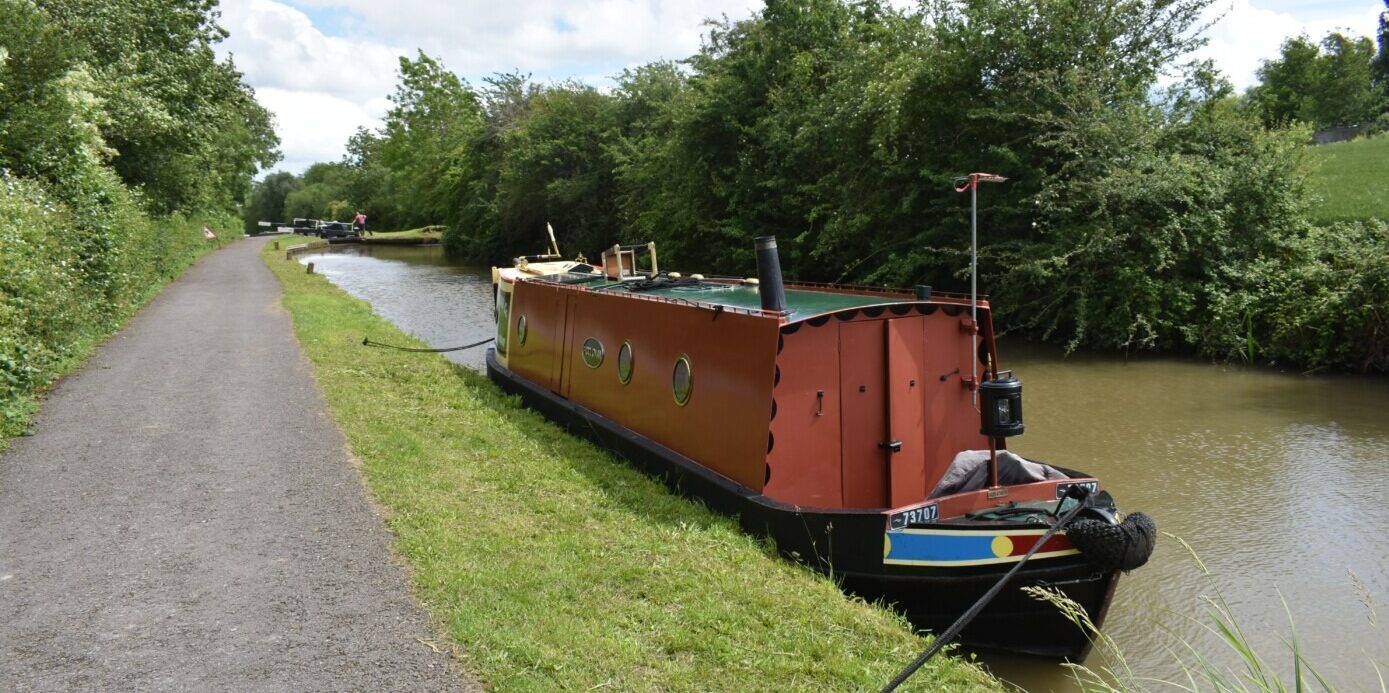Time Travel: Canals – the UK’s forgotten way of travelling
Today, the British canal network is overwhelmingly associated with leisure, but the waterways have historically been drivers of great change across the nation – without canals, it’s entirely possible that there may never have been an Industrial Revolution. So, given their former importance, what happened to canals?
The Romans used canals for irrigation purposes, and as a means of connecting existing waterways with each other
Canals had existed prior to the development of the nationwide canal network, and date as far back as Roman times. The Romans used canals for irrigation purposes, and as a means of connecting existing waterways with each other – the Foss Dyke in Lincolnshire was developed around 100AD for those purposes and may be the oldest canal in Britain. Canals were employed in the Middle Ages as a favourable alternative to transporting goods across pitted muddy roads and carrying supplies to sites where new castles and churches were being built. At Windsor, a cut was dug with the express purpose of bringing the Thames closer to the castle.
During the Tudor reign, advances in canal engineering were needed to support British economic and political growth – one of the earliest developments was the invention of the simple flash lock, allowing boats and barges to move up stretches of rivers that were stepped. Further developments were needed, and there were efforts to improve the rivers during the 15th and 16th centuries, creating direct links to new and expanding towns and opening them up for trade. In this period, we saw the opening of, among other major waterways, the Exeter Shipping Canal in 1567.
It’s no small claim to say that canals reshaped Britain literally and figuratively – there were approximately 4,800 miles of canal by 1850
As we approached the 1700s, they were almost entirely connected to wealthy landowners, who used these waterways to transport agricultural products in southern England. However, more river navigations were built by northern merchants in the first half of the century, strengthening the position of established industrial towns, and the success of these projects caught the eye of the Duke of Bridgewater. In 1763, his eponymous canal opened from his coal mines in Worsley to the centre of Manchester. It halved the price of coal in the town overnight, and his social position ensured that knowledge of the development spread.
The majority of the British canal network was built in the so-called ‘Golden Age’ of canals, which took place between the 1770s and the 1830s and was a direct result of the Industrial Revolution, and followed the example of the Bridgewater Canal. There was mass canal building over this period, with merchants, aristocrats, bankers, and industrialists wanting to ease supply issues and open up new markets – there were some failures, and the level of investment in the 1780s was viewed sceptically, but by the 1790s, canals were seen as a top form of investment.
Some famous names emerged at this time, their success compounded by the canals. The famous pottery owner Josiah Wedgewood saw the advantage of using canal boats to bring bulk quantities of raw material straight to the factory door and then finished goods onto the market. Engineers such as Thomas Telford lay claim to the magnificent tunnels, aqueducts, and structures that were essential to the canal network and spanned the land that was originally seen as impossible to traverse. It’s no small claim to say that canals reshaped Britain literally and figuratively – there were approximately 4,800 miles of canal by 1850.
The success of the waterway system, and the industries it supported, had a major effect on Britain’s economy, creating the wealth necessary for the country’s world dominance in the Victorian era
The success of the canal network enabled Britain to become the first industrial power in the world. As a result, many people were to move from the country to the town, changing the face of British society completely. The success of the waterway system, and the industries it supported, had a major effect on Britain’s economy, creating the wealth necessary for the country’s world dominance in the Victorian era. However, waterways were essentially local in character – largely financed and built by local people, their greatest effect was upon the communities through which they passed.
Ironically, it was the Industrial Revolution that forced a turn away from canals, just as it provoked their development and expansion. From the early 1840s, there was a gradual shift to rail as a means of transporting goods and people, both because trains could carry more and they could do it quicker. Then, as the road network grew in the 20th century, the uneconomic canals were largely abandoned. The network was mostly nationalised in 1948, and now the waterways are primarily used for recreation and tourism purposes. It’s pleasing that such an important part of British history has taken on a new life, with more boats on canals now than there ever were during its commercial heyday.

Comments